
Cloud computing has emerged as a central concept in contemporary information technology. Businesses are increasingly using the cloud to store, process and manage data. This cloud environment offers a higher degree of flexibility, scalability and cost efficiency, allowing organisations to operate more efficiently and on demand. In this blog, we will cover the fundamentals of cloud computing, focusing on the main components, the advantages and disadvantages, and the current trends of cloud technology.
Key Components of Cloud Computing
Infrastructure as a Service (IaaS)
Infrastructure as a Service (IaaS) is the fundamental layer of cloud computing, offering businesses virtualised computing capacity, comprising servers, storage and networking resources. Rather than purchase costly physical hardware, companies can instead rent resources from cloud providers, decreasing capital spend. The model is also highly flexible both in terms of scale and configuration, meaning that this infrastructure can be scaled up and down depending on demand. For example, an extra demand during busier times of the day or year can be met by quickly scaling up the resources required. Quieter periods can then be scaled down to save money. Another advantage of IaaS is that businesses can choose the operating system, type of storage, and networking features to suit their needs.
A third main advantage of IaaS is that it enables companies to gain access to advanced technology without having to incur the costs of hardware acquisition and maintenance. In this way, companies are spared the bother of having to worry about their IT infrastructure and can focus instead on their core business operations. Companies can also rely on the cloud provider to automatically back up their data and applications and to provide solutions for data recovery and enhanced security. This guarantees the continuity of access to their data and applications in case of a system failure or cyberattack.
Platform as a Service (PaaS)
With Platform as a Service (PaaS), you gain a platform on which to build, deploy and manage applications without needing to deal with the underlying infrastructure. The service provider handles all the burdensome crap such as servers, storage and networking; developers need only write code and build applications. This should allow applications to be created far faster than before. The idea here is that developers can focus solely on the code, allowing for a rapid time-to-market.
PaaS additionally encourages innovation by giving developers access to a suite of libraries, services and tools such as databases, analytics, artificial intelligence (AI) and machine learning tools that can improve the app’s functionality. These services are also integrated into a single platform, accessed through a simple user interface. Furthermore, PaaS solutions are often built with collaboration in mind so that multiple developers can work on the same project at the same time, particularly useful for large development groups. With the infrastructure management taken care of, organisations can focus on creating good applications and services.
Complete Our Comprehensive IT Course and Unlock Your Future in Tech!
Software as a Service (SaaS)
SaaS is the best-known component of cloud computing, where software applications are accessed via a web browser over the internet. SaaS applications are installed and run on the cloud provider’s servers, which means that users do not need to download and install any software; they can use the application online. This type of software is called ‘Web software’ or ‘on-demand software’ and is the most common form of SaaS. There are numerous advantages of SaaS applications. For example, users can start to use the software immediately without any installation or updates.
The biggest advantage of SaaS is the automation of updates and maintenance. With SaaS, the software is hosted in the cloud, and the provider updates the app, patches its security, and performs maintenance without any effort on the user’s part, ensuring that end-users always get the latest features and security improvements. SaaS also eliminates the need for internal IT support: the cloud provider handles the technical issues related to the software, and there is no need for in-house IT staff. This also applies to the pricing model of SaaS, which is pay-as-you-go, meaning that businesses can avoid the need for a large capital spend upfront and instead pay as they use it, reducing the cost of software for organisations of all sizes.
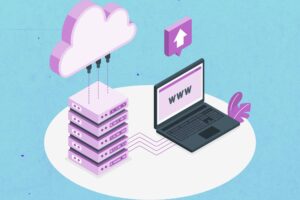
Types of Cloud Deployment Models
Public Cloud
In this deployment model, the cloud services are available over a network (e.g., the internet) and shared among multiple customers. Since the resources are pooled together and provided to a large number of users, cloud providers can achieve economies of scale and offer their services at a lower price. Most web-based email services, like Gmail and Outlook, are hosted in public clouds. Another example is public cloud storage, where you can store anything from holiday photos to large media files, such as images, videos or the audio files of a podcast, in a cloud storage service such as Dropbox. Lastly, a public cloud can host applications such as business applications, web applications or even games, which you can access through a browser or a client application. One of the main benefits of the public cloud is the ability to scale resources quickly since the cloud provider manages the underlying infrastructure.
However, this communal nature can make the public cloud seem risky, especially for organisations that deal with sensitive data. While cloud vendors take powerful precautions against intrusion, data breaches or snooping can be more likely on a system that’s shared among many users. That means businesses need to carefully weigh up their security needs: is this information something that can be shared with a public cloud vendor, or does it need special handling or a private cloud? The answer might vary depending on the specifics of the situation and will vary based on the industry and the information.
Private Cloud
A private cloud is a cloud environment that’s dedicated to one organisation, and it’s more secure, controllable, and customisable. The public cloud operates under the model where resources are shared among multiple customers and reside on one cloud platform, but a private environment isn’t shared and is owned by a single organisation – either on-premises or hosted by a third-party provider. It’s a popular choice for businesses that require strict compliance, security or performance standards.
The main advantages of the private cloud are more security (as the organisation owns the infrastructure and can implement its security procedures and policies) and flexibility to customise (as the organisation can configure the environment to its particular applications and workloads). However, the private cloud is more expensive to operate, as the organisation has to hire in-house IT staff or a dedicated third-party provider for its management and maintenance. Nevertheless, despite the high costs, the private cloud is the preferred option for some industries, such as finance, healthcare and government, whose activities are strictly regulated in terms of data privacy and compliance.
Hybrid Cloud
The hybrid cloud model is a mix of the two above models, combining the best of both worlds: private and public cloud. In a hybrid cloud, a private cloud is used for sensitive or critical workloads, but the public cloud is used for less sensitive workloads or to handle spikes in demand. This is a flexible approach that allows companies to selectively move work to the best resources while reducing costs.
One of the main strengths of the hybrid cloud is the balance it strikes between security and cost-effectiveness. You can keep sensitive data and applications locked away in a private cloud to suit compliance and security concerns while benefiting from the cost and scalability advantages of the public cloud for other tasks. The hybrid cloud also helps to ensure that all systems and applications share a common environment, irrespective of whether they exist in the private or public cloud. Data and applications can seamlessly move between private and public clouds depending on the requirements of an organisation.
Multi-Cloud
Multi-cloud is a cloud deployment model in which a business uses multiple cloud services from multiple providers to achieve a balance between vendor lock-in and redundancy. Multi-cloud gives businesses the ability to pick and choose the best services and features from different cloud providers to build a cloud environment that maximises performance, cost and security. Multi-cloud also provides increased resilience, as downtime from a single provider’s outage could affect all of a business’s cloud services.
However, the complexity of managing a multi-cloud environment is another challenge altogether, and it’s why robust cloud management tools are so important. Organisations need to have a well-formulated multi-cloud strategy, with formalised rules for how data is managed, secured and compliant on individual platforms. These are just some of the challenges of multi-cloud, but ultimately it’s a worthwhile investment. Adopting the multi-cloud approach offers tremendous flexibility, performance and leverage when negotiating prices and terms.
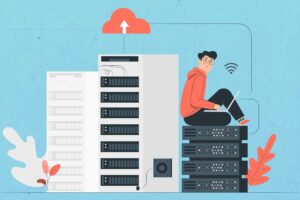
Benefits of Cloud Computing
Scalability and Flexibility
Flexibility and scalability are two of the most important advantages of the cloud. With a traditional IT infrastructure, companies have to make investments in physical hardware and software. This means they have to plan to ensure that they have the right capacity and computing power for present and projected needs. With the cloud, companies can scale up or down depending on demand. For example, when traffic to a company’s website increases, the company can temporarily increase its computing power, bandwidth, and storage capacity to handle the demand without any additional investment. Conversely, when traffic reduces, they can scale back their resources without incurring any unnecessary costs for unused capacity. This flexibility helps companies adapt more quickly to changing market conditions and customer requirements.
It is also more flexible in terms of access and deployment. With cloud services, data and applications can be accessed from any location with an internet connection. This allows employees to work from home or when they are on the road. It also enables teamwork when team members might be in different locations around the world. Furthermore, data and applications can be deployed in public, private, and hybrid clouds depending on the business’s goals and objectives.
Cost Efficiency
Another benefit of using cloud computing is that it reduces IT costs dramatically. For databases on your own servers, you have to pay for the hardware and the space to put the servers into, plus you have to pay someone to manage the servers, and all of those expenditures are upfront and inflexible. Using the cloud eliminates the need for all of this infrastructure, thereby reducing costs. In addition, when you use the cloud, you pay only for what you use, meaning you won’t spend any more than you have to (e.g., if you pay only for two hours of storage because your site is only live during that time, your bill will be less than if your site was live 10 hours a day). This kind of pricing structure is ideal for managing budgets and reducing costs because no matter what your needs are, you are paying only for the resources you actually need.
However, more than that, cloud computing also reduces operational expenditures. When using a cloud solution, hardware maintenance, software updates, and security are all the responsibility of the cloud provider. This means that IT staff can spend less time on routine upkeep and more time on strategic projects. Decreased hardware and cooling capacity requirements result in lower energy consumption and less floor space, too. All of these factors make cloud computing an attractive proposition for modernising – and even just bringing up-to-date – IT operations for businesses of all sizes.
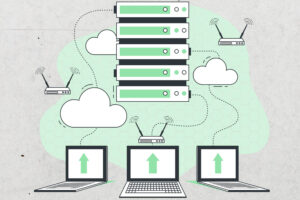
Disaster Recovery and Business Continuity
Cloud computing also plays a vital role in disaster recovery and business continuity planning. Traditional disaster recovery solutions can involve investing huge amounts of money in duplicate infrastructure, data storage and other related resources. These can be expensive, difficult, and complex to manage. Cloud-based disaster recovery solutions are much more affordable and scalable, allowing businesses to back up and restore data when there are outages or disasters. Data redundancy and automated backup solutions offered by cloud providers often offer a layer of protection for critical data and the ability to recover data rapidly in the event of an outage or disaster.
For organisations that need to keep operating even when the unexpected occurs — from natural disasters to hardware failure to cyberattacks — the cloud becomes a crucial asset. With cloud-based disaster recovery and business continuity, organisations can quickly resume business as usual, minimising the disruption to customers and revenue. As such, these tools are becoming an important part of modern IT strategies.
Collaboration and Remote Work
Cloud computing has revolutionised business operations by enabling companies to connect in innovative ways that make remote working easier and more productive. Cloud computing tools allow employees to access the information and resources they need while working remotely, from any device, anywhere in the world. This is especially valuable in today’s growing trend of remote and hybrid work environments, where teams are often spread out geographically and need to collaborate effectively from afar. File-sharing, video conferencing and other collaborative software applications hosted in the cloud enable real-time communication and teamwork and allow projects to continue without disruption no matter where employees are based.
The cloud also aids the increasing trend of remote work by allowing secure access to company data and applications. This could mean working from home, on the go or from an office without sacrificing security or productivity. Not only does this flexibility boost employee morale, but it also helps businesses attract and retain some of the world’s top talent from any region. Cloud computing helps businesses stay competitive and responsive to changes in the workforce by encouraging collaboration and remote work.
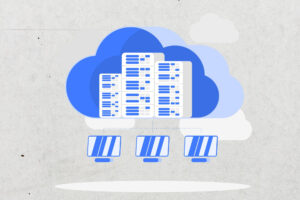
Challenges and Considerations
Security and Compliance
Security is one of the key challenges of cloud computing. When a business moves its data and applications to the cloud, it exposes them to data breaches, unauthorised access and insider threats. Cloud environments are generally secure, but they can have vulnerabilities if the proper configuration and management steps are not attended to. Suppose a business wants to maintain the security of its data. In that case, it must implement strong access controls, enlist the use of encryption, and monitor its environment to detect intrusions and react to threats. It must also adhere to a plethora of regulations that have been established in recent years, such as the General Data Protection Regulation (GDPR) in Europe, which places strict requirements on how businesses must manage the security of data and ensure that the privacy of its citizens is maintained. Failure to do so carries significant fines, in addition to harming the business’s reputation. To deal with these requirements, businesses need to work closely with their cloud providers to ensure that the proper security measures are in place and that data is handled in accordance with the law.
Data Privacy and Sovereignty
Data privacy and sovereignty are central issues in cloud computing, as data is often stored in multiple locations and jurisdictions. Data sovereignty means that data is subject to the laws and regulations of the country in which it is stored. This poses a challenge to businesses operating internationally, as different countries have different requirements for data protection and privacy; in order to mitigate these issues, businesses looking to operate around the world should carefully consider selecting cloud providers that provide data residency options and allow customers to choose where their data is stored. Organisations could also rely on private and hybrid cloud models to maintain greater control of sensitive data, ensuring it is compliant with local regulations.
Vendor Lock-In
Vendor lock-in is the risk that a business will become so reliant on a single cloud provider’s services that it is difficult to switch providers or disaggregate applications and move them back on-premises. This could reduce the agility of an organisation, increase its costs and make it difficult to flex with changing business requirements. One mitigation for the risk of vendor lock-in is the multi-cloud strategy, where organisations utilise services from more than one cloud provider. This allows an organisation to cherry-pick the best services from each provider, avoid being stuck with one vendor, and improve the resilience of their service by reducing the chance that a single provider outage will impact all services. Another mitigation is that cloud solutions should be open, standards-based, and have high levels of interoperability, allowing organisations to migrate workloads between different cloud environments more easily.
Performance and Downtime
Performance or downtime issues can be the life of the party for cloud services. Service outages or performance degradation can affect the availability and reliability of your business-critical service or website. It is important that you find out what your cloud provider is offering in the way of service level agreements (SLAs). These documents indicate the uptime and performance promised by the provider and any compensation provided in case of service disruptions. You can also set up redundancy and failover mechanisms, such as using two or more data centres or providers, to ensure continuity in case of an outage. Performance monitoring and testing can help you identify issues before an actual outage occurs and determine if the cloud service is meeting your performance needs.
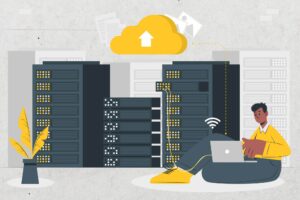
Cloud Computing Trends to Watch
Serverless Computing
Serverless computing is an emerging architecture that offers developers an abstraction where they can build and run applications without managing the underlying infrastructure. The serverless model is administered by the cloud provider, which automatically provisions resources on demand. In this model, businesses are charged only for the compute time when their applications are actually running instead of paying in advance for pre-allocated capacity. While serverless computing reduces the complexity of developing applications, it also simplifies operational tasks and reduces operational costs, making it an attractive option for many businesses. Serverless computing is still evolving, but it will likely become more popular in the future for event-driven applications, microservices and real-time data processing.
Edge Computing
Edge computing is a paradigm in which data processing and analysis is performed closer to the source of the data (e.g., IoT devices or local edge servers) rather than in a centralised cloud data centre. This reduces latency and improves performance, allowing real-time decision-making for applications in which the data needs to be processed immediately. Edge computing could prove highly useful for industrial applications, such as manufacturing, healthcare and autonomous vehicles, which require low-latency processing. With the rise of IoT devices and the anticipated explosion in ‘data at the edge’, the importance of edge computing is only likely to grow in the coming years.
Artificial Intelligence and Machine Learning Integration
Through the combination of AI and ML with cloud computing, companies of all sizes can derive advanced analytics and automation without expensive in-house AI and ML experts or infrastructure. Cloud providers provide AI and ML services to enable them to build, train, and deploy models at scale, opening up a new world of possibilities for innovation and efficiency. This trend is likely to intensify as AI and ML become more accessible and embedded within daily business operations, from customer service to predictive maintenance. Businesses that leverage these technologies via the cloud can disrupt their competitors by making decisions based on data and automating routine tasks.
Hybrid and Multi-Cloud Adoption
As hybrid and multi-cloud strategies look set to become the preferred choice for businesses seeking greater flexibility, resilience and control over their cloud environments, we will see a continued and unstoppable shift towards the use of hybrid and multi-cloud deployments. Indeed, organisations that currently prefer hybrid clouds can expect to reap the benefits of a hybrid and cost-optimised cloud environment by combining public and private cloud resources. At the same time, those employing multi-cloud strategies to avoid vendor lock-in and improve redundancy will find themselves in a more advantageous position compared with those relying solely on single-cloud vendors.
Complete our course about Affiliate Marketing, WordPress Website Creation, and a Hosting System – Get a Leg Up.
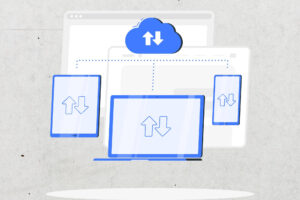
Best Practices for Implementing Cloud Computing
Assessing Business Needs
While we can’t give you specific advice about your business, there are certain things to consider before moving to the cloud. What are the specific needs and goals of your business? What type of applications do you run? How sensitive is the data you have? What are your compliance requirements? How much are you willing to spend on cloud computing? How much do you expect your resources to grow in the next couple of years? All of this information will help you understand which cloud model (public, private, hybrid, etc.) is best suited to your needs, which cloud provider offers the features and services that better align with your goals and business objectives, and what services you should use in each environment.
Selecting the Right Cloud Provider
Your first big decision when implementing cloud computing is to choose the right cloud provider. What signals should you look for in your selection process? First, evaluate the provider’s security standards, certifications for regulatory compliance, customer support, and billing options and structures. Then check out their track record for uptime and performance, along with their ability to satisfy your technical needs and support the operational needs of your organisation. Finally, favour vendors that offer flexibility in terms of deployment models and adhere to open standards in cloud architectures, which will help to minimise the danger of vendor lock-in and make it easier to pivot as your business needs change.
Developing a Cloud Migration Strategy
A thorough migration strategy that’s broken down into smaller, more tangible tasks can minimise disruption and maximise the likelihood of a successful cloud migration. First, think about migrating things in stages, and start with the least critical applications first so you can feel out the process before moving on to things that are more important to the business. Plan for data migration. Keep in mind that, depending on what kind of migration you’re doing, it might be necessary to move and migrate data in stages as well. It’s important to ensure that you maintain data integrity and security throughout the process, and, in some cases, applications might need to be refactored or altered to run efficiently on the cloud. So, be sure to factor in time for testing and optimisation during the migration. Don’t forget about keeping your top-level stakeholders in the loop. Regular communication with all the internal and external stakeholders involved in this process from the very beginning of the migration will help to keep expectations realistic and streamline the process.
Ensuring Security and Compliance
Security and compliance in the cloud is a continuous process that needs to be planned and executed. Grant strong access control rights to restrict who can access your data or applications and encrypt your data while at rest and in transit. Audit and monitor your environment on a regular basis to identify potential security threats before they become a bigger problem and, depending on the nature of your business, make sure to comply with the new GDPR, HIPAA or other cloud regulations that might be relevant to your industry. Stay on top of regulatory changes and work with your cloud provider to ensure your cloud environment complies with new threats, and new regulations.
Complete Our Comprehensive IT Course and Unlock Your Future in Tech!
Conclusion
Managing Cloud computing has become a key part of IT environments today. Enterprises rely on Cloud computing for fundamental building blocks such as IaaS, PaaS and SaaS, along with deployment models such as public, private, hybrid and multi-cloud. Cloud computing offers clear benefits such as scalability, cost efficiency and increased collaboration, and it presents challenges such as security concerns, data sovereignty and vendor lock-in. IT professionals should stay aware of emerging trends such as serverless computing, edge computing and AI-embedded computing. As the evolution of cloud computing continues, keeping up with the latest developments is critical to staying ahead of the curve and exploiting its potential to shape the future of IT.
